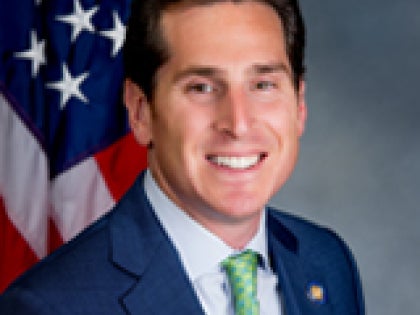
PSEG action plan includes 'hundreds' of measures to prevent Isaias repeat, exec says
PSEG Long Island on Wednesday will brief LIPA trustees on a multi-pronged plan to address widespread failures in its restoration efforts following Tropical Storm Isaias, including further hardening the electric grid, enhancing communication platforms and stabilizing a computer system central to outage response.
In an interview Tuesday, PSEG Long Island president and chief operating officer Dan Eichhorn said the work will include "more storm hardening to prepare for more frequent and violent storms" and technology changes that address the cascading failures that occurred in its communications and computer systems.
The company recently conducted two stress tests of the so-called outage management system at the root of its failures after the Aug. 4 storm, which PSEG said left 503,000 customers without power. It found an older version of the system considerably more stable than the newer version that broke down in the storm.
Eichhorn said other plans being reviewed include moving selected power lines underground, employing microgrids that can operate independently of the LIPA system to provide power when it goes out to a small isolated region, and covering part of the cost of generators for customers in remote areas where downed trees frequently cause outages. PSEG also wants to work with customers to identify and remove trees on LIPA rights of way that may be likely to topple onto wires in storms, he said. PSEG operates the Long Island grid under a long-term contract with the Long Island Power Authority.
"There’s going to be hundreds of things we wind up doing," Eichhorn said.
Storm-hardened circuits performed more than 44% better in the storm than those not fortified, so PSEG is working with LIPA to examine the costs of extending storm hardening beyond the 8% done primarily with federal funding following superstorm Sandy, he said.
"We, more than anybody, are determined to make sure we improve," Eichhorn said. "We analyze what occurred, implement the improvement, and make sure the experience customers had [after Isaias] never happens again."
PSEG has already worked to increase the capacity of its telephone system to make sure a large and sudden influx of customers calling in outages aren’t impeded by bottlenecks.
The company on Thursday is conducting a storm drill to further test its responses across the system, he said.
Eichhorn said a LIPA task force recommendation to prevent the PSEG computer system from providing restoration times to customers in the first 24 to 48 hours after a storm is "a strategy that a lot of other utilities use," and would help avoid the situation that occurred after Isaias, when shifting restoration times frustrated customers.
"We want to be able to get a better assessment of the damage so that when we do give an estimated time of restoration it’s much more accurate," he said.
He would not rule out that PSEG could take legal action against the vendor that provided the outage management software. "I wouldn’t take anything off the table," he said. "The focus [now] is really on improvement of processes. Those things will come after."
While much of the focus is on improving customer communications and computer problems, Eichhorn said the company is also working to lower restoration times—a major issue with customers, regulators and public officials. PSEG already has a plan in place to hire some 250 new line workers over the next five years, he said, though the force may be stable as existing workers retire. It also wants to find ways to lock in agreements to guarantee outside crews for the region sooner to help with restoration.
While longer-term hardening plans will come with higher capital costs, Eichhorn said he doesn’t expect the improvements the company is planning will have a "major impact" on customer bills.
PSEG’s cost estimate of $350 million remains in place, and LIPA plans to apply for federal funding to cover some 75% of those costs.
Lawmakers who have pushed new legislation following the company’s highly criticized response to the storm said their concerns were not allayed by the LIPA task force's report, which found that the cascading computer and communication failures also hampered PSEG's ability to accurately manage field repairs.
Sen. Todd Kaminsky (D-Long Beach), said the recommendation that PSEG not publish any estimated restoration times for the first 24 to 48 hours after a storm was "concerning."
"The answer to what to do when we have outages after a storm is now to just tell people nothing for up to 48 hours," he said. "They still have no idea how to estimate that and communicate that information and it’s extremely troubling and problematic."
Sen. Jim Gaughran (D-Northport), who introduced legislation that would require the Public Service Commission’s involvement if power isn’t restored 72 hours after the governor declares a state of emergency, said he was troubled by the "false narrative" in the report that suggests the state’s "review and recommend" role of LIPA and PSEG is the same as other utilities that are regulated by the PSC.
"This is where the state legislature really has to focus its attention on getting powers back to the PSC," he said, "because Long Islanders really have no protection. PSEG can do whatever they want."
Gaughran said it was also troubling that PSEG did not have redundancy built into its communications systems to redirect the inundation of calls that overloaded its systems.
LIPA trustee Matthew Cordaro, speaking for himself, said he believed PSEG’s major error was "putting too much faith in all this electronic stuff when the problem is too large" to be fielded by computers and the phone system.
"There’s no excuse for not having an adequate" automated phone system, he said.
Cordaro said he was also troubled that the life-support equipment list of critical-care customers was outdated, calling it a "blatant error."
